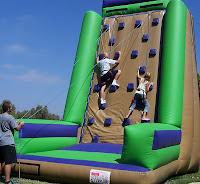Dalhousie: Located in the outer slopes of hill Dhauladhar range is another
important hill resort in the district Chamba. A number of picturesque walks run
through the oak, pine and deodar forests around the town and offer excellent
views of the Chenab, the Ravi and the Beas valleys. It is thickly wooded with
stately pines and oaks and has lovely picnic spot all around. Dalhousie is the
gateway to Chamba. . Originally conceived as
a sanatorium by its founder Lord Dalhousie, it is today one of the most quiet
hill stations.
St. Andrew's Church: St. Andrew's Church commonly known as the
Church of Scotland was built in the year 1903 at Baloon by Protestant
Christians. The Church is approximately one and half kms. from Dalhousie's bus
stand.
St. John's Church: This Church stands on
the Gandhi Chowk approximately 2 kms. from the main bus stand of Dalhousie.
This Church was the first to be built after the town of Dalhousie was founded
Bakrota Hills: The fascinating and bewitching Bakrota Hills offer to the
tourists the brisk walk round the hills besides a grand view of snow-clad
peaks.
Dainkund: This is a towering and beautiful peak which offers
panoramic views, specially on a clear day, of the three main rivers - Beas,
Ravi and Chenab.
Panchphulla: Sardar Ajit Singh, a great freedom fighter, breathed his
last on the day India gained independence, 15th August, 1947. His 'Samadhi' is
located at Dalhousie's Panjphulla, a picturesque spot with a natural tank and
water flowing under small bridges from which the place takes its name. Sardar
Ajit Singh was the uncle of martyr Bhagat Singh. At Panjphulla, there is a
'Samarak' in the memory of Sardar Ajit Singh.
Subhash Baoli: A lovely spot for picnic, commanding a good view of snow
covered hills. This has been named after the indomitable man of Indian
politics, before the independence days, Shri Subhash Chandra Bose. It is said
that he used to drink water from this place during his stay in Dalhousie.
Khajjiar: A lovely spot for picnic, with a small lake commanding a
good view of hills. Paragliding and Zorbing is
also available here.
Dharamshala: It came into being in 1849, when it was selected as a site to accommodate a
native regiment that was being raised in the town. .
The ideal location for the cantonment was found at the slopes of the
Dhauladhar, upon which stood an old Hindu sanctuary or 'Dharamshala' the name
adopted for the town. Dharamshala stands at the foot of Dhauladhar and has a
magnificent view of snowy peaks, deodar and pine forests, tea gardens and
beautiful hills. Dharamshala now really has become international, with a number
of Tibetan settlements and the residence of Noble Laureate the 'Dalai Lama'.
McLeod Ganj: The arrival of the Tibetan
spiritual leader, the Dalai Lama, along with thousands of refugees to
Dharamshala in 1959 made the life here more active. A number of Tibetan
settlements with religious education and other rehabilitation centers
mushroomed all over the Mcleodganj. As Dharamshala became the headquarter of
the Tibetan Government in exile, headed by Dalai Lama, it gained prominence all
over the world and prominent personalities started arriving here.
Bhagsunag Fall: It is known for its old temple, a
fresh water spring, waterfalls and slate quarries. Bhagsunag can be approached
by road. The Bhagsu fall is one of the main attractions of Mcleodganj. You can
take a dip in the chilly water of fall.
St. John's Church: The church lies in the
forest between McLeod Ganj and Forsyth Ganj. It has a monument dedicated to
Lord Elgin, one of the viceroys of India, who died at Chauntra (Mandi district)
and was buried here in 1863 A.D.
Dharamkot: It is situated on the
crest of a hill, this favorite picnic spot affords a panoramic view of the
Kangra valley and the Dhauladhar ranges. One can reach Dharamkot by a simple
trek from Bhagsu.
Triund: The snowline starts just 5
km. from Triund and affords a breathtaking view of the snows above and the
valley below. It is a popular picnic and trekking spot.
FOR DETAILED ITINARY PLS Click here








